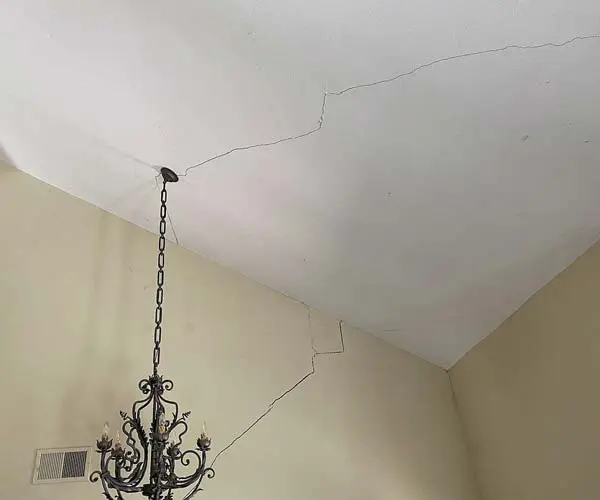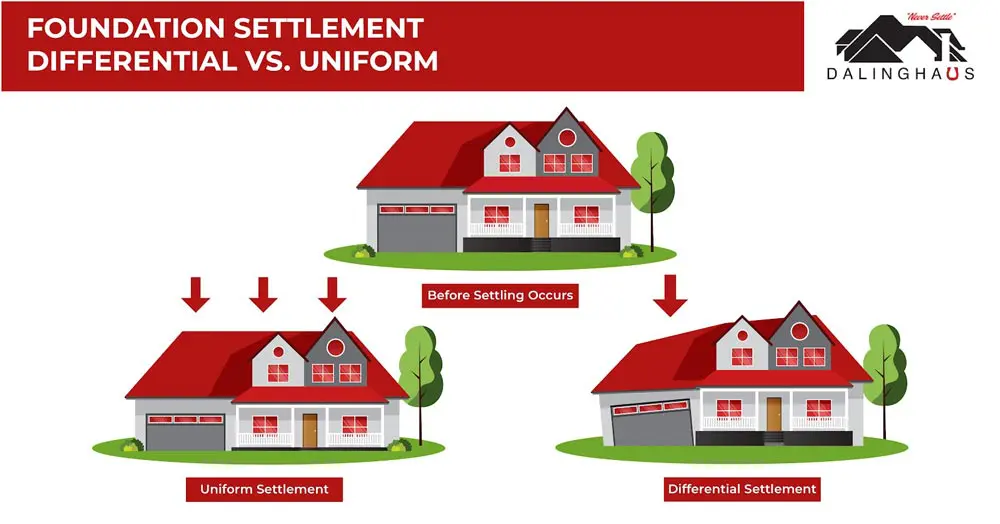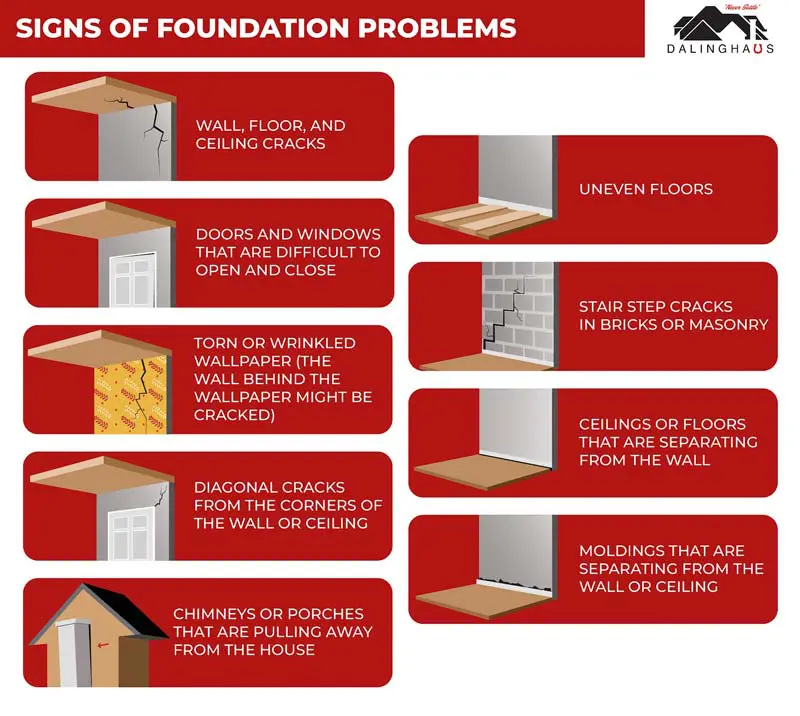Have you noticed that your ceiling drywall has a crack? If so, don’t hit that back button because that’s what this article is about. We’ll review the causes of ceiling drywall cracks, when to worry about them, how they’re repaired, and more.
Should I Be Worried About a Crack in My Ceiling Drywall?

Not necessarily. Not all ceiling drywall cracks are created equal. Some cracks in your ceiling drywall are cosmetic and don’t pose any real problem. These cracks often occur due to uniform foundation settlement, temperature changes, or even poorly taped drywall seams. On the other hand, some cracks in your ceiling’s drywall can be much more serious and indicate structural damage (i.e., a foundation problem). We’re going to talk more about how to tell which is which in just a bit.
What Causes Cracks in Ceiling Drywall?
As noted above, not all cracks in ceiling drywall are a sign of structural damage. However, some are. So, let’s divide the causes into the following two categories: non-structural ceiling drywall cracks and structural ceiling drywall cracks.
The most common causes of non-structural ceiling drywall cracks
Non-structural ceiling drywall cracks are pretty common and can be caused by various factors, including the following:
- Moisture damage – This might be caused by something on the floor above the crack, such as a leaking pipe or water damage caused by a flooding incident. Over time, this moisture can weaken the drywall and cause it to crack. There’s often some discoloration on the ceiling as well.
- Improperly taped drywall – Another culprit behind ceiling drywall cracks is improperly taped drywall. When the tape used to join the drywall sheets isn’t applied or finished correctly, it can eventually come loose and cause a crack.
- Uniform foundation settlement – After a structure is built, it’s normal for it to settle slightly into the ground. This settling can lead to small cracks in walls and ceilings, including drywall cracks.
The most common causes of structural ceiling drywall cracks
Structural ceiling drywall cracks are those that affect the building’s structural integrity. They’re usually caused by differential foundation settlement or when a foundation settles into the ground unevenly. The best way to describe differential settlement and how it differs from uniform settlement is via an illustration:

Differential settlement puts a lot of stress on a foundation, and if it isn’t promptly fixed, it will eventually cause severe structural damage. Common causes of differential settlement include soil that wasn’t adequately prepared before construction, expansive soil, seismic events, and erosion-prone soil.
Another common cause of structural ceiling drywall cracks is something heavy on the floor above the crack. This might be a piano, a heavy bathtub, or something else.
If you notice a crack in your ceiling drywall, don’t panic. It might be the result of normal settlement or poor installation. However, if the crack looks bad or is growing, or there are other signs of a foundation problem, contact an experienced foundation repair contractor right away and ask for an evaluation. Foundation problems caught early cost less to repair.
Ceiling Drywall Cracks to Be Concerned About
You need to be concerned about structural ceiling drywall cracks. Here are the most obvious signs a ceiling drywall crack is structural:
- A large ceiling drywall crack – Usually, the bigger the crack, the more likely it is to be structural. Sometimes, you just know. If it looks bad, it probably is.
- A crack that’s getting bigger – Cosmetic drywall cracks are often hairline and usually don’t get bigger over time.
- A crack that runs across the ceiling and down a wall – These cracks are typically a sign of structural damage and require immediate attention. If left unaddressed, they can significantly damage the building structure and pose a safety hazard.
- A ceiling drywall crack accompanied by sagging – These cracks typically occur due to the weakening of the ceiling joists or the roof trusses. They can eventually lead to the collapse of the ceiling and pose a significant danger to residents.
- Cracks created by the ceiling separating from the wall – These cracks are typically caused by differential settlement and need to be evaluated by a foundation repair contractor.
It’s essential to identify the type of ceiling crack and the root cause of the problem to determine the appropriate course of action. Unless you’re sure the crack isn’t structural, it’s always best to consult a foundation repair contractor who can assess the situation and provide the necessary repairs.
If you see a suspicious ceiling crack, look around for other signs of a foundation problem. These include:
- Uneven floors
- Doors and windows that don’t open and close properly
- Stair step cracks in brick or masonry
- Cracks in walls and floors
- Moldings that are separating from the wall
- Chimneys and porches that are leaning away from the house

How Are Cracks In Ceiling Drywall Repaired?
The chosen repair solution for a ceiling drywall crack will depend on what caused the crack. Is it non-structural or structural? If the crack was caused by improperly taped drywall, that can be easily fixed by a competent drywall installer. However, if the crack is structural, you’ll need an experienced foundation repair contractor to assess the damage and provide the appropriate repair solution. Ceiling drywall cracks caused by differential settlement are usually fixed by underpinning the foundation using push, helical, or slab piers. Underpinning stabilizes the foundation by extending it down to load-bearing soil. It’s essential to address structural issues as soon as possible to prevent further damage and potentially dangerous situations.
If you’re concerned about a crack in your ceiling drywall, contact us today to schedule an evaluation and receive a repair estimate. We serve Southern California, Arizona, and Nevada.






